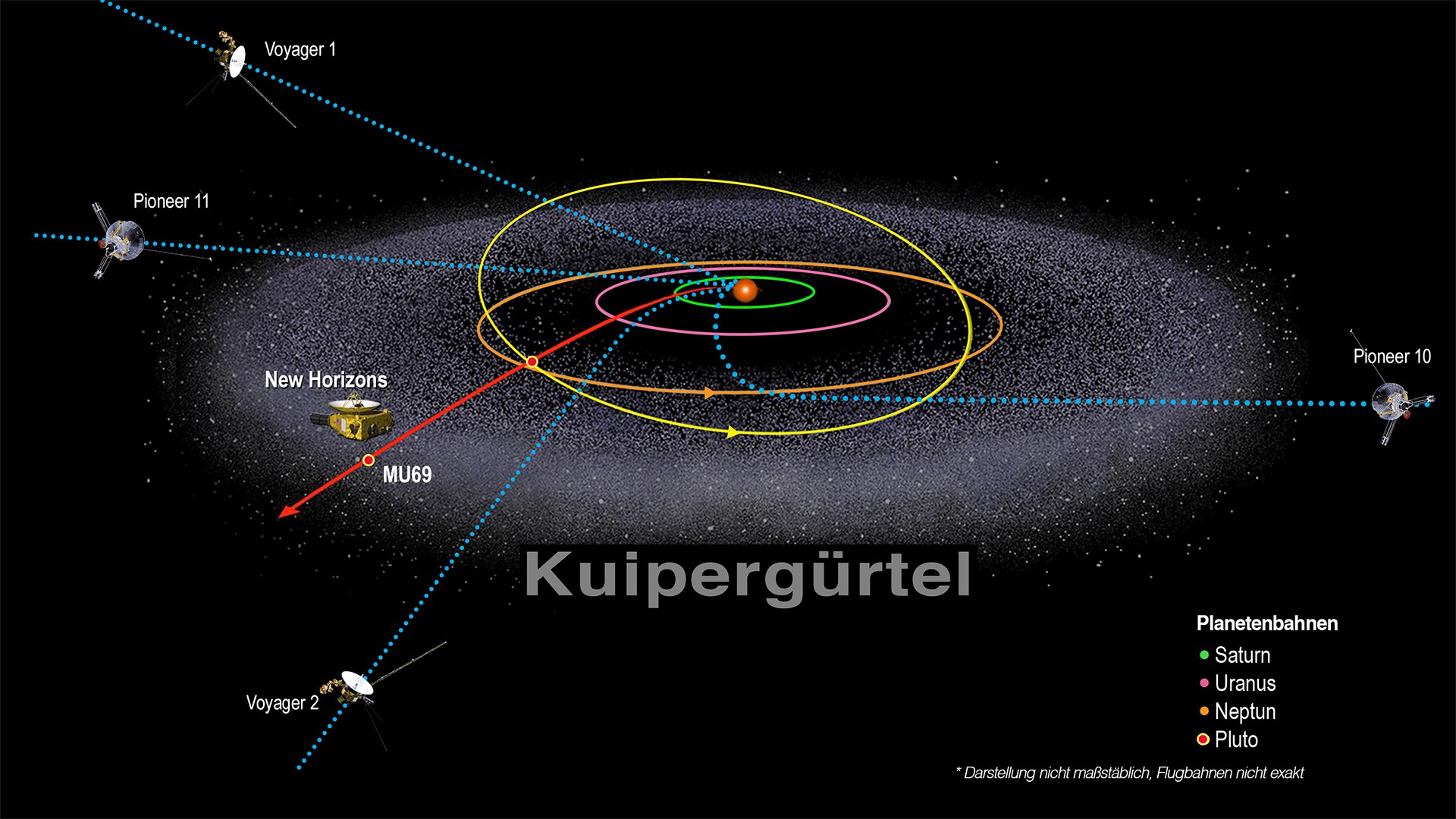New Horizons and other spacecraft at the edge of the Solar System
New Horizons and other spacecraft at the edge of the Solar System
After its flyby of Pluto, New Horizons was able to manoeuvre to another body in the Kuiper Belt, a region beyond Neptune that contains numerous icy bodies up to a solar distance of 18 billion kilometres. On 1 January 2019, the spacecraft then flew past the 31-kilometre double body Arrokoth (2014 MU 69) and has since been travelling even deeper into space. It recently passed the distance of eight billion kilometres from the Sun. However, this does not make New Horizons the most distant spacecraft. Pioneer 10 (launched in 1972; contact until 2003) is even further away from the Sun, at about 19 billion kilometres, and its sister spacecraft Pioneer 11 (launched in 1973, last contact in 1995) has already reached a distance of almost 16 billion kilometres from the Sun. The distance record is held by the Voyager 1 spacecraft (launched in 1977), which has since left the Solar System and is almost 22.5 billion kilometres from the Sun, while its sister spacecraft Voyager 2 (launched in 1977) has so far reached a distance of 'only' 18 billion kilometres; during 2023 it will 'overtake' Pioneer 10. On both Voyager missions, some instruments are still functioning, sending measurement data on the interstellar magnetic field and the plasma environment to Earth.

